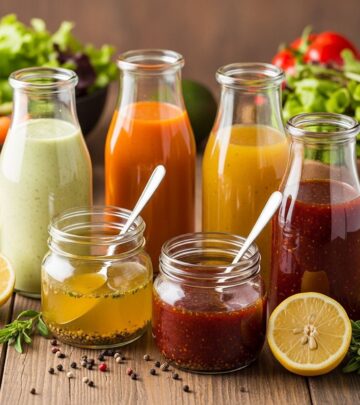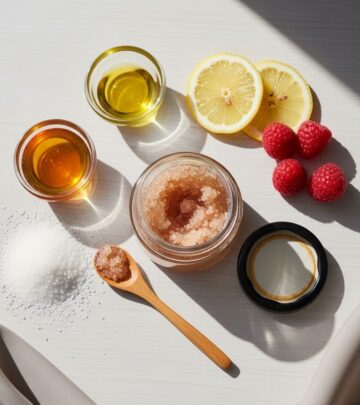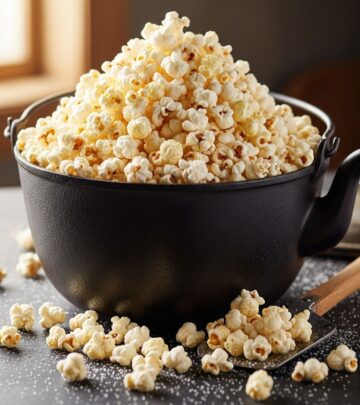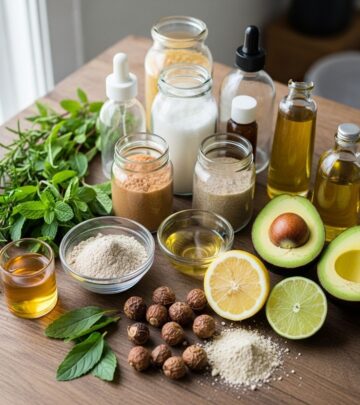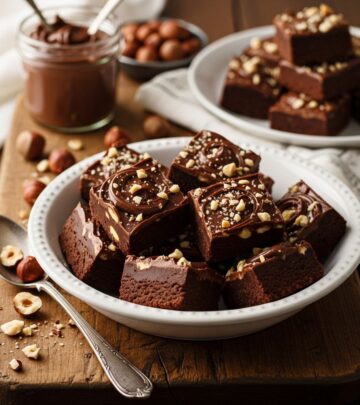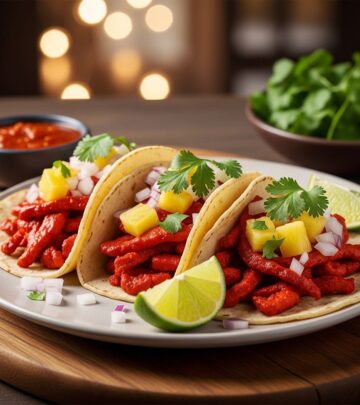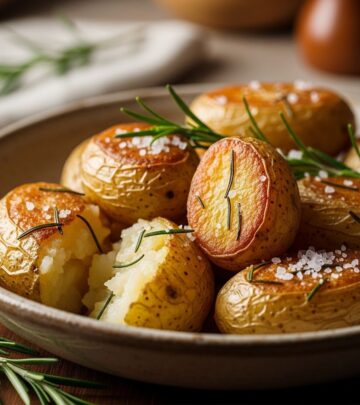How to Cook Black-Eyed Peas: Methods, Tips, and Tasty Variations
Master techniques that deliver tender beans in soups, salads, and Southern staples.
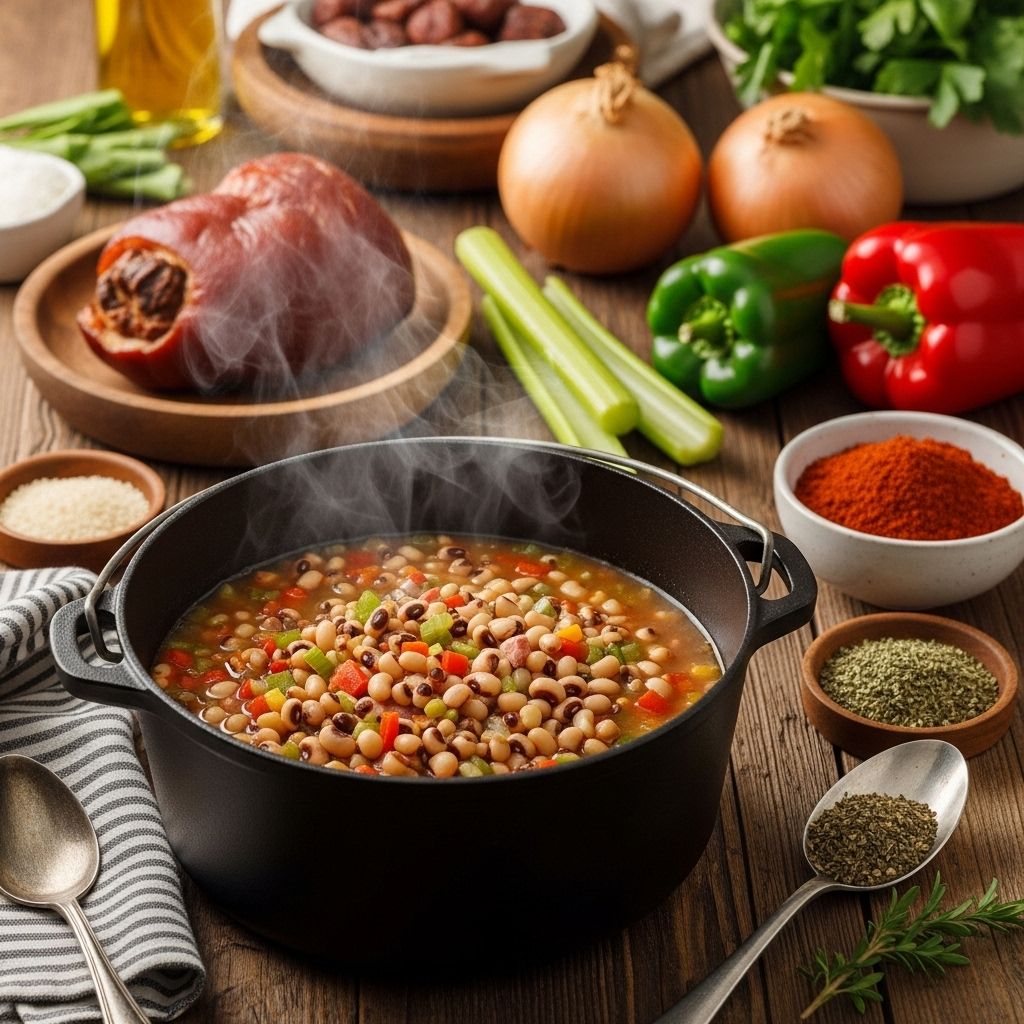
Image: HearthJunction Design Team
Black-eyed peas are a staple in Southern cuisine, loved for their earthy flavor, hearty texture, and versatility. Whether used as the star of Hoppin’ John, swirled into a rich soup, or tossed into a vibrant salad, these legumes deliver nutrition and soul-warming comfort. If you’ve ever wondered how to turn dried (or canned) black-eyed peas into a centerpiece dish, this guide covers everything—soaking, cooking, expert flavoring, and recipe inspiration.
What Are Black-Eyed Peas?
Despite the name, black-eyed peas are not peas but beans—specifically, a variety of cowpea. Recognizable by their creamy bodies and signature black spot, they are famous for being served on New Year’s Day, especially in the American South, as a symbol of prosperity and luck.
They are rich in protein, fiber, and micronutrients, making them an excellent base for hearty stews, salads, and appetizers.
Should You Soak Black-Eyed Peas?
Soaking black-eyed peas is optional but recommended for reducing overall cooking time and making them more digestible. Here’s what you need to know:
- Traditional Soak: Cover dried peas with several inches of cold water, let them soak overnight (about 8 hours), then drain and rinse before cooking.
- Quick Soak: Place peas in a pot, cover with water, bring to a boil for 2 minutes, remove from heat, cover, and let stand 1 hour. Drain and rinse.
- No Soak: You can cook black-eyed peas without soaking, but allow for a longer simmer (and slightly firmer texture).
Note: Soaked beans cook more evenly and may be gentler on digestion for some people.
How to Cook Black-Eyed Peas (Dried, Fresh, or Canned)
Cooking times and techniques vary slightly depending on whether your black-eyed peas are dried, fresh, or canned. Here’s how to cook each type:
Cooking Dried Black-Eyed Peas
- Rinse and Sort: Pick over the peas to remove debris or split beans. Rinse well under cold water.
- Soak (optional): Use one of the soaking methods above.
- Simmer: Add peas to a pot and cover with water (about 3:1 ratio). For flavor, add aromatics such as onion, garlic, bay leaf, a ham hock, or smoked turkey leg.
- Cook Time: Bring to a gentle boil, then reduce to a simmer. Cook for 45–60 minutes, until the peas are tender but not mushy. Start testing after 35 minutes—older beans take longer.
- Season: Add salt and acidic ingredients after the peas are nearly tender to avoid skins becoming tough.
Cooking Fresh or Frozen Black-Eyed Peas
- No soaking required!
- Simmer in broth or water: Use the same 3:1 ratio of liquid to beans.
- Cook Time: 30–35 minutes for fresh, 30–40 minutes for frozen, until just tender.
Cooking Canned Black-Eyed Peas
- Drain and rinse for the best flavor (and lower sodium).
- Heat through on the stovetop with preferred seasonings, about 5–10 minutes, or add directly to prepared soups, stews, or salads.
Black-Eyed Peas: Ingredient and Seasoning Ideas
Bring out the best in black-eyed peas with smart seasoning and flavorful ingredients. Here’s what you can try:
- Meaty Smokiness: Bacon, smoked sausage, ham hock, or smoked turkey neck.
- Vegetables: Onion, shallot, celery, bell pepper, jalapeño, tomato, collard greens, or kale.
- Herbs and Spices: Fresh or dried thyme, bay leaf, parsley, basil, crushed red pepper flakes, Creole seasoning, black pepper, and garlic.
- Liquids: Chicken broth, vegetable broth, or water. A splash of vinegar or a squeeze of lemon at the end enhances flavor and brightness.
Step-by-Step: Classic Stovetop Black-Eyed Peas
- Start with 1 pound dried black-eyed peas (about 2 cups), soaked overnight or quick-soaked if desired.
- In a large pot, sauté 4–5 slices chopped bacon or 1 cup diced smoked sausage in a splash of olive oil until browned.
- Add 1 diced onion, 1 stalk diced celery, 2–3 teaspoons minced garlic, and (optional) 1 minced jalapeño. Cook until softened and aromatic, about 5 minutes.
- Add drained peas, 7–8 cups chicken broth (or enough to generously cover), one bay leaf, and 2 teaspoons fresh thyme. Stir in 1–2 teaspoons Creole seasoning if desired.
- Bring to a boil, lower to a gentle simmer, and cook partially covered for 45–60 minutes. Check for tenderness at 40 minutes.
- Stir in 2 cups chopped collard greens in the last 15–20 minutes for extra nutrition and color.
- Season with salt and pepper to taste near the end. Remove bay leaf and serve hot.
Black-Eyed Peas Cooking Times Table
| Type | Soak Needed? | Cooking Time | Notes |
|---|---|---|---|
| Dried | Recommended | 45–60 min | Soak reduces time & improves texture |
| Dried (No soak) | No | 60–90 min | Longer cook, slightly firmer beans |
| Fresh/Frozen | No | 30–40 min | Milder flavor, quick cooking |
| Canned | No | 5–10 min | Heat to serve, already cooked |
Easy Black-Eyed Peas in the Instant Pot
The pressure cooker is a game changer for black-eyed peas, especially if you forgot to soak them. Here’s a simple approach:
- Sauté: In the pot on Sauté mode, cook 3–4 strips of bacon (diced) in 1 tbsp olive oil until crisp. Add 1/2 cup chopped onion and cook until fragrant and beginning to caramelize.
- Add peas and broth: Pour in 1–1/2 lbs. fresh or frozen black-eyed peas, 2 cloves minced garlic, 1–2 cans of low-sodium broth, and 1 tsp beef-flavored bouillon paste. If needed, add water so liquid covers peas by an inch.
- Pressure cook: Cook at high pressure for 30 minutes. Natural release for at least 10 minutes before opening.
- Finish: Season with salt and pepper. Let peas sit in the warm cooker until ready to serve for ideal flavor blending.
Yield: About 10 servings. Each serving delivers healthy fiber and protein with under 180 calories.
Classic Southern Dish: Hoppin’ John
Hoppin’ John is an iconic black-eyed peas and rice dish—traditionally eaten on New Year’s Day for good fortune. Smoky pork (bacon or ham hock), aromatic vegetables, and long-grain rice make this one-pot meal truly special.
Simple Hoppin’ John Recipe
- Drain soaked peas, rinse under cold water, and place in 4 cups of fresh water. Boil, then simmer uncovered 10 minutes. Drain again.
- Sauté chopped onion, celery, bell pepper, and garlic in oil until soft and fragrant (about 6-8 minutes).
- Add 115g (4oz) smoked pork hock or bacon, 1 tsp dried thyme, 1 bay leaf, and 1/2 tsp crushed red pepper flakes. Cook briefly, then stir in black-eyed peas, 2 cups broth or water, and 1 cup rinsed long-grain rice.
- Simmer, covered, until the rice is tender and peas are creamy (about 18–20 minutes).
- Garnish with sliced green onions and dash of hot sauce. Serve with cornbread or collard greens for tradition.
Black-Eyed Pea Salad: Fresh and Zesty
For a bright, wholesome side, black-eyed peas shine in salads—especially with tangy vinaigrette and colorful vegetables.
Quick Black-Eyed Pea Salad
- Whisk 1/4 cup extra-virgin olive oil with 1/4 cup red wine vinegar, 1/2 tsp kosher salt, and black pepper to taste in a big bowl.
- Add 2 cans (15 oz each) black-eyed peas (drained, rinsed), 1/2 finely diced red onion, 1 diced red bell pepper, 1 diced tomato, 4 sliced scallions, 1/4 cup each chopped parsley and basil.
- Toss well and let sit for 30 minutes (or overnight!) so flavors meld.
This salad improves as it sits, making it perfect for meal prep or picnics.
Serving Suggestions: Pairings for Black-Eyed Peas
- Cornbread: The classic, crumbly companion for spooning up saucy peas.
- Rice: Plain or flavored rice turns peas into a satisfying main.
- Greens: Collards, kale, or turnip greens complete the Southern experience.
- Grilled or roasted meats: Chicken, pork chops, or sausage for a heartier meal.
Tips for Perfect Black-Eyed Peas
- Don’t add acid (like tomatoes or vinegar) until peas are nearly tender; acid slows softening.
- Salt near the end of cooking, not the beginning, to avoid tough skins.
- Check peas early for doneness—taste, don’t just go by time.
- For creamier peas, lightly mash a handful against the side of the pot before serving.
- Make ahead: Cooked black-eyed peas keep in the fridge for up to 5 days and freeze beautifully for months.
Black-Eyed Peas Nutrition
These legumes are loaded with nutrition. Per serving (about 1/2 cup cooked):
- Calories: ~120–130 (without meat or extra fat)
- Protein: 7–9 grams
- Fiber: 3–5 grams
- Rich in: Folate, iron, potassium, and magnesium
Low in fat and naturally gluten-free, black-eyed peas are a smart choice for plant-based meals and meal prepping.
Frequently Asked Questions (FAQs)
Do I really have to soak black-eyed peas?
No, soaking is not strictly necessary—but it cuts cooking time and can make the peas more tender. Some cooks prefer the firmer texture of unsoaked beans.
What happens if I oversoak black-eyed peas?
A long soak (over 24 hours) can cause peas to start fermenting. If they smell off or foam excessively, discard and start over.
Can I freeze cooked black-eyed peas?
Absolutely! Cool cooked peas completely, then freeze in airtight containers up to 3 months. Thaw overnight in the fridge before reheating.
How do I avoid mushy black-eyed peas?
Don’t overcook and check for doneness early. Avoid aggressive stirring and toss in acidity only at the end. Older dried beans may break down more quickly, so cook gently.
Are canned black-eyed peas as good as dried?
Canned peas are convenient and a solid option for salads or fast meals, though some find their flavor less robust than slow-simmered dried peas. Draining and rinsing helps improve their taste and reduce sodium.
More Recipe Variations and Ideas
- Spicy Black-Eyed Peas: Include jalapeño or cayenne and finish with plenty of hot sauce.
- Vegetarian Black-Eyed Peas: Omit meat and build flavor with smoked paprika, caramelized onions, and vegetable broth.
- Hearty Stew: Add diced tomatoes, chopped greens, and chunks of potato or carrot for a filling soup.
- Black-Eyed Pea Dip: Blend cooked peas with garlic, lemon, and olive oil for a protein-packed spread.
Popular Black-Eyed Peas Add-Ons
- Pepper vinegar or splash of apple cider vinegar for tang.
- Fresh herbs for a burst of color and flavor.
- Crumbled feta or bacon bits for an extra punch in salads.
Expert Cooking Tips
- Use low-sodium broth or water to retain control over salt levels.
- Avoid boiling at high heat; gentle simmering prevents beans from bursting open.
- Let peas rest in their cooking liquid before serving for deeper flavor.
- If using canned peas in a hot dish, add at the end—just enough to heat through without breaking apart.
Final Thoughts
Whether making a celebratory meal or prepping for the week, black-eyed peas are a nutrient-rich, flavorful canvas for countless recipes. Experiment with different proteins, veggies, and spices. Enjoy them as a Southern classic or make them your own with global seasonings and modern twists.
References
- https://delishsides.com/ina-garten-black-eyed-peas-recipe/
- https://delishglobe.com/recipe/hoppin-john-black-eyed-peas-and-rice/
- https://www.africanbites.com/black-eyed-peas-recipe/
- https://www.familysavvy.com/perfect-black-eyed-peas/
- https://www.delish.com/cooking/recipe-ideas/a38416009/black-eyed-pea-salad-recipe/
Read full bio of medha deb

